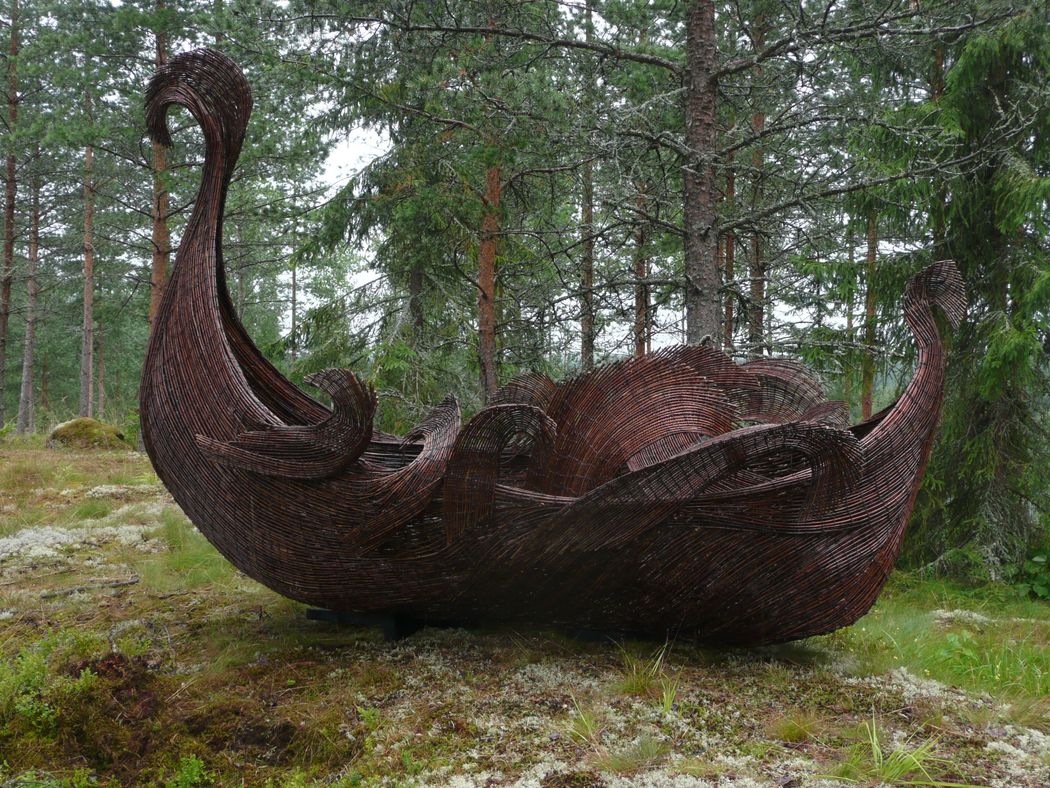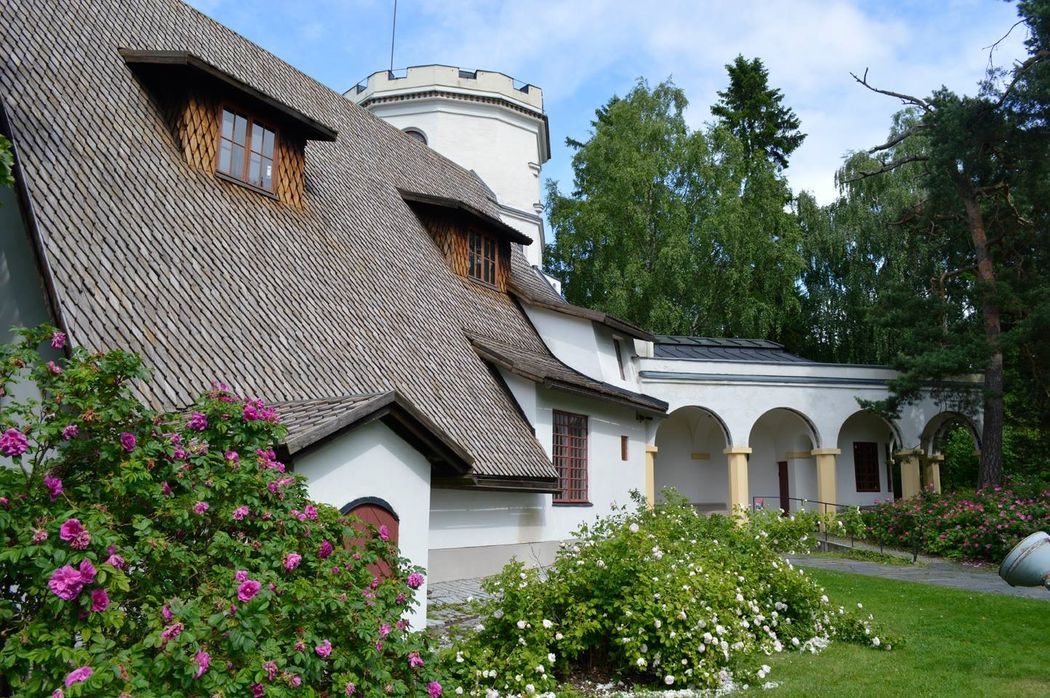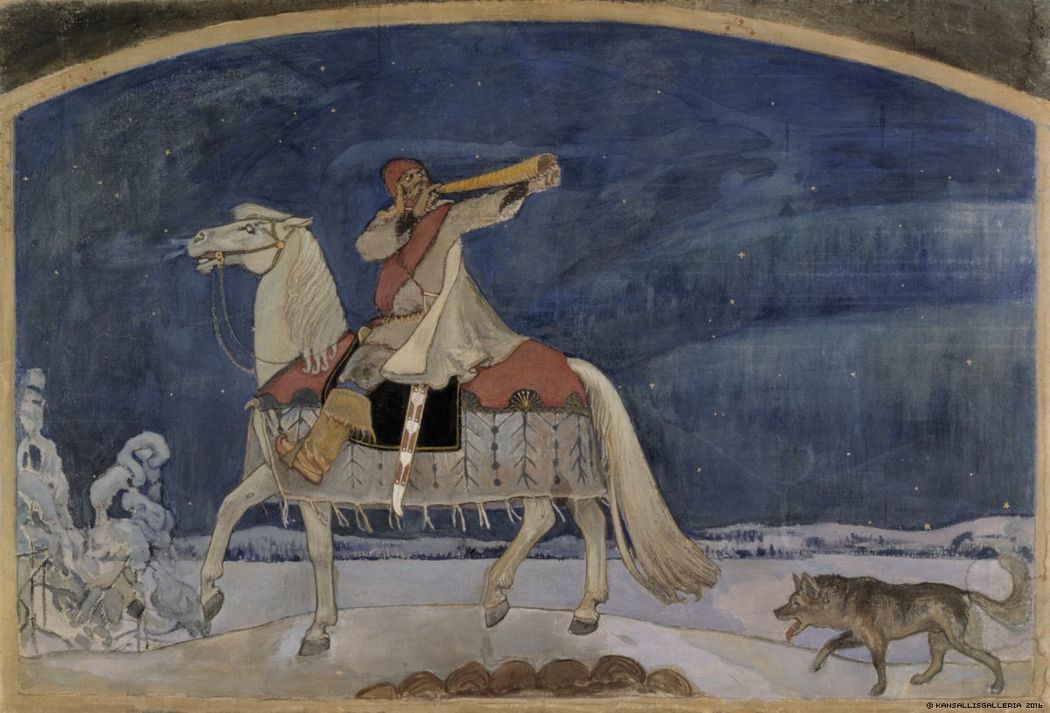“People have a hunger for these kinds of experiences”
An interview with Tuija Wahlroos, Director of the Gallen-Kallela Museum in Finland
Throughout the network our museums have been reopening around the world, below follows a discussion with Tuija Wahlroos, Director of the Gallen-Kallela Museum in Finland - one of the first museums in the ASMN to reopen.
The Gallen-Kallela Museum is the former studio-home of painter Akseli Gallen-Kallela, designed by the artist himself. Opening to the public in 1961, read on to discover the plans put on hold by Covid-19 closures, how the museum adapted and what their first day back open was like after two and a half months closed!
-
Tuija Wahlroos, Museum Director: We opened on the first of June so in that sense we are doing fine at the moment - we're very happy to be able to open since we were closed for two and a half months, it's great to see people, I think we all missed the audience!
Molly Skinner, Artist's Studio Museum Co-ordinator: What did the museum have planned for 2020? What was the year supposed to look like and how did the closures affect you?
T: We had just recently opened an exhibition called Nordic Noir. It was an art exhibition where we borrowed artworks from Norway including contemporary artists mixed with old art. It was a very fine exhibition that we had prepared for many years with Norwegian artists. Economically this was a big project for our museum and of course we were hoping that we would get a large audience.
But the exhibition was only open for four or five weeks and then it had to close. So that was a very big disappointment, and I don't think I have personally still recovered. I was so disappointed. We decided to bring down the exhibition and send the works back to Norway since we didn't know how long we would be closed and they were delicate works so we couldn't keep them here and just wait to see what would happen.
-
“Now we're focused on exhibitions that come from our own collections"
-
We were supposed to open the new exhibition in the beginning of May and this is the exhibition that we're showing now the museum is open. Now we're focused on exhibitions that come from our own collections and this exhibition will be up for almost a year. It's a long exhibition and in this situation that's good because then we don't have so many economic responsibilities for this year in terms of exhibitions.
We did have to delay one project connected to the exhibition that has now opened which tells us about the architecture of the museum and Gallen-Kallela's activities as an architect as we wanted to add information for our audience to the outside of the museum and to the garden. The plan was for a mobile application so visitors can get more information about the museum and its history, culture and historical stories about the area on their phones. We were in a very good position with this project but now we had to postpone the publication until the fall of this year, so that's something that we are still waiting for to be able to do.
Luckily, we weren't hurt too bad by this crisis because we happened to already have these kinds of plans in place. We also applied for a grant last year in collaboration with three artists' studio museums and we received €200,000 as a grant to develop our exhibition policy and museum educational programmes. The idea is that we will create an exhibition which will unite all these ideas and help develop the kinds of activities we can do in these kinds of museums.
Because we got this grant and we have been able to carry on that project. It's a very big project involving contemporary artists and are looking forward to sharing what we have learnt and to share with the international network.

M: I'm sorry about the closures you had to put in place, were you able to adapt what the museum was doing whilst you were shut? Or was it a case of pausing until reopening?
T: We already had material on our website and digital programmes and material - the virtual museum for instance. We were a little bit more active on the social media accounts that we have. We made some short video clips about the exhibition and what got really popular was clips we made of teddy bears visiting the museum. Our museum educator made them and people loved them!
This was something that was new for us and we really don't have that much experience on social media. What we learnt from this experiment was that this was something we need to do more of in the future. We want to train ourselves and get some more education on how to do these kinds of things right - with the proper technology and things like that.
M: Was there anything that you changed during this time that you would consider keeping on? It sounds like you'll continue focusing on social media and digital techniques - I really like the idea of the teddy bears visiting the museum!
T: It was funny yes and people really liked it! I think at the moment I can't say we made any big changes because we had already been putting material on the website. What was new for us was live streaming things that happened in the real time and putting ourselves into the spotlight. Museum professionals are used to talking about the content and the exhibitions but it's totally new to do it on social media.
-
“As a working community I think we became closer because we had big difficulties that we had to face”
-
In general it made us think outside the box. As a working community I think we became closer because we had big difficulties that we had to face - economically especially. We are so dependent on our own income in terms of ticket sales so we had to think together about what we will do to handle this. Unfortunately we had to make this decision to put workers on furlough - in Finland it's not the same amount as normal salary and this was a hard decision to make but we realised there was no other way - if we wanted to survive during this period this is what we had to do. Now everybody is relieved that the museum is open and luckily we only had to be away for one month each.

M: I think it's been a really difficult time for arts organisations in particular, but it's great to hear that it brought you closer together as a working community. I was also wondering what your biggest challenge was in planning for reopening? Was it affected by social distancing?
T: So, all our guides are part time and they didn't work at all during closure, but when we knew that we were able to open we started to plan this opening with them. They're the experts in this field and they know the difficult spaces or sticking points when people get into the museum. In the beginning the guides and other people working in the museum were also worried about their health and how we were going to make it safe for everybody. We had to carefully go through everything and pay attention when opening so that it will be safe for the people working and for the audience. Of course we can't guarantee that nothing will happen but we've tried to make everything transparent so people know what we as a museum have done.
-
“It's more peaceful than usual but I think in this situation, it's good not to have too many people”
-
We have things like flexi boards and this disinfection stands, extra cleaning and masks. So far our government has not said anything clearly about masks and not mandatory but many people are wearing them and there's a big discussion in this country: 'should we wear them or not and do they protect us or not?'
We had guidance given to us by the museum association so there were experts telling us what to do and general discussion about the details so I think museums were very prepared and informed. So far everything has been fine, I heard that the bigger museums are quite quiet but in our museum we have had a fair amount of visitors at a level that is easy to handle. It's more peaceful than usual but I think in this situation, it's good not to have too many people.

M: I was wondering if being a studio museum had affected how you planned for reopening or if that had any impact?
T: Well of course we had some challenges because of our special architecture - we have for instance a tower with narrow steps. But in general I think most things were the same just on a smaller scale. The same things have to be taken into account.
We are more vulnerable because we have a smaller staff, so if somebody is sick for instance that would mean that perhaps we had all been exposed to this virus and potentially we would even have to close the museum. So that is something I am afraid of happening.
M: What was your first day like, what was it like to be open again?
T: It was very exciting, it was like being at some kind of sports event - we started the day with a press conference for the new exhibition and after that we opened for the public. We were really excited, thinking 'will people come?' There was media here to see 'who are the people who will come' and they were interviewing them which was funny. They were looking to see if everything would go like it was supposed to, will people keep their distance?
-
“I think the people are now hoping that things will go back to normal ... they value these kinds of places more now than they did before, they have a hunger for these kinds of experiences”
-
We were excited ourselves and delighted to see each other after a few months break - it was a very funny feeling in a way. We had maybe 20 people on the first day, so really a little number so we saw in practice what it will be like when visitors come: how they will behave, is it easy to handle that number of people and what kind of instructions they need. Some people who came were a bit cautious even though there were not too many people there were staff there so we were quite a big group. There was a little feeling of a rush and pride but I realised that we need to be careful so that the audience didn't get a feeling that we can't control the crowd as they were scared about their own health.
These people haven't been to museums in a long time so it was different to ordinary days and it was so nice to get the audience back - that was really wonderful. We were closed for two and a half months which is a long time. I think the people are now hoping that things will go back to normal, they hope they can go to places and they value these kinds of places more now than they did before, they have a hunger for these kinds of experiences.
Tuija Wahlroos has been the Director of the Gallen-Kallela Museum since 2005. Her work has included numerous exhibition catalogues, a presentation about Tarvaspää Museum: Tarvaspää: Akseli Gallen-Kallela's studio castle and has been writing Take Your Soul! exploratory paths to Akseli Gallen-Kallela's art.
